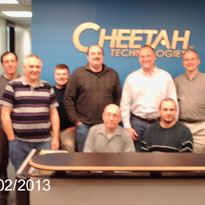SNMP
- Course:SNMP
- Course ID:SNMP-ESSENT Duration:3 days Where: Your Office (7+ Persons)
- Download Course Description (PDF)
Available as a private, customized course for your group at your offices or ours and in some cases as a WebLive(TM) class.
Course Outline
- SNMP Foundations
- Important references
- History, trends, strengths, weaknesses
- Understanding standards
- RFC’s from the IETF
- ASN.1 used to define SNMP
- Enterprises
- OID’s (Object Identifiers) used to identify organizations
- Where to get an Enterprise OID, how to use it, and how to manage an Enterprise OID space
- Message standards
- SNMPv1, SNMPv2c, SNMPv3
- Manager/Agent protocol operations
- UDP transport issues
- Security of the protocol
- MIB (Management Information Base)
- SMIv1 and SMIv2 syntax
- Examples of MIB content and organization
- OID’s and instance values of MIB objects
- Terminology summary
- SNMP Network Management Principles
- Manager Products: Categories and examples
- Architectures of SNMP-managed networks
- Managing SNMP agents
- Agent configuration: Data & methods
- Potential agent problems
- Manager functionality
- Discovery and mapping
- Monitoring system availability
- Monitoring non-SNMP functions
- Handling traps (alarms) from agents
- Real-time data collection
- Long-term data trend reports
- Manager configuration
- GUI behavior
- Device discovery
- Device access and attributes
- MIB compilation
- Trap filters
- Local alarms
- Custom tables
- Debugging an SNMP Managed Environment
- Command line tools
- Using validating MIB compilers
- Network traffic capture tools
- Manager functionality
- Understanding MIBs
- MIB syntax
- SMIv1 and SMIv2 differences
- Object types
- Data types
- Data subtypes (textual conventions)
- Table structures
- Conformance statements
- Complex MIBs
- MIB objects and agent semantics
- Resolving MIB compilation problems
- Typical uses of MIB data objects
- MIB syntax
- Wrap-up: Course Recap, Q/A, Evaluations
Course in a Nutshell
SNMP is a widely used protocol that facilitates the management of networked devices from a central location. Originally intended only for the management of network devices such as routers and switches, its usage has grown rapidly to encompass the monitoring of nearly any electronic device one can think of. SNMP is now used to monitor and manage television broadcast studios, automated fare collection systems, airborne military platforms, energy distribution systems, emergency radio networks, and much more.
The first of our series of three courses on SNMP, it is followed by a course that deals with the security and other enhancements embodied in SNMPv3, the latest version of this protocol. Our final course on SNMP is aimed at the software developers responsible for programming SNMP agents for deployed devices.
This course is designed to fast-track individuals and organizations wishing to become SNMP-competent. It employs highly interactive lecture combined with hands-on exercises to help you effectively acquire the necessary knowledge and skills and apply them to real-life situations.
Aimed At
IT professionals, engineers, tech and customer support representatives, marketing and sales personnel and others responsible for SNMP deployment and management, MIB and agent development, and SNMP sales and support.
Prerequisites
While there are no specific prerequisites for this course, good general knowledge of computer networking will be very helpful.
- “Excellent overview of SNMP in sufficient depth to get a good feel for those areas. Very knowledgeable instructor, excellent response to questions. The participant handbook had lots of info, references. Very helpful in establishing design requirements.” – Mark Sander, Sr. Software Engineer, A Satellite Communications Company

